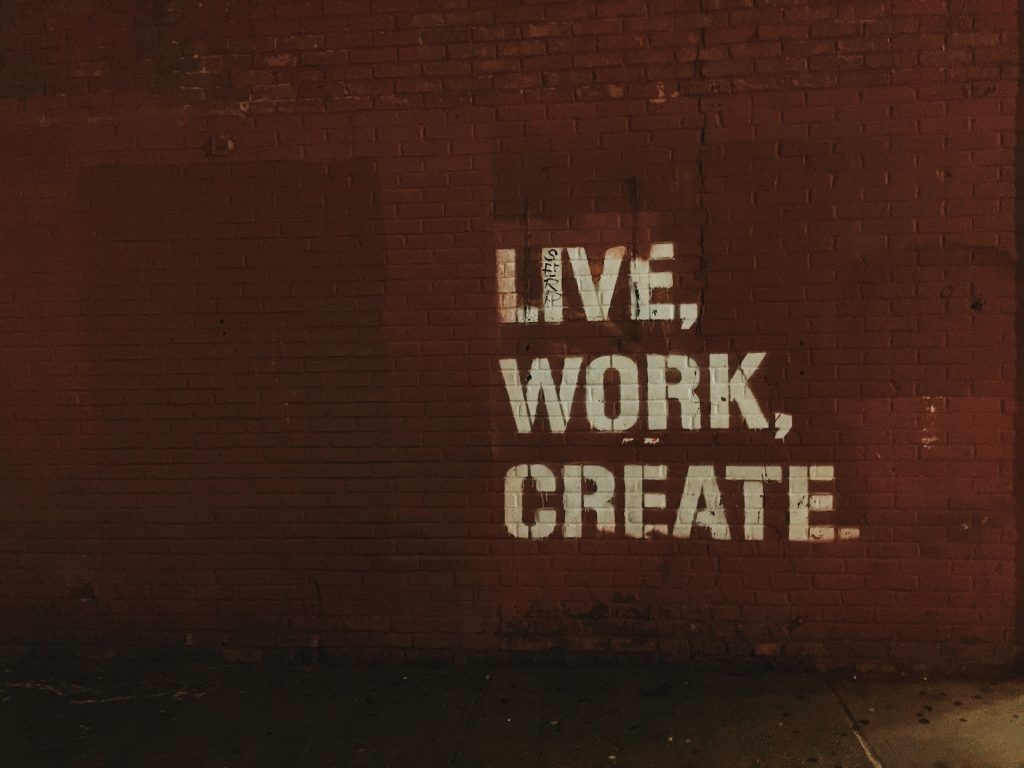Representatives of creative professions have been accusing each other of plagiarism for centuries. This article will discuss what is considered plagiarism and what is not, its key signs and differences from borrowing and piracy, plagiarism examples, and, most importantly, how to resist committing plagiarism and avoid accidentally becoming a plagiarist yourself.
To ensure your own work stays original and up to academic standards, consider using services that allow you to pay for research papers written from scratch by professionals.
Let’s start with some important terminology: What is plagiarism? Examples can be found in different areas, and we should consider it a synonym for “the appropriation of authorship.” This means publishing someone else’s work under your own name or borrowing fragments without indicating the source. If the official creator of a work deliberately does not mention that they had co-authors and declare themselves the sole author, it is also considered plagiarism.
Another term – self-plagiarism, also known as “auto-plagiarism” or “duplication”, refers to the abuse of one’s own creativity: the author’s repurposing of a previous original work or part of a publication in another place without citing the source. A characteristic feature is using a previous work in the guise of a new one. Self-plagiarism is not a violation of the author’s rights and does not incur punishments, since the author cannot cause themselves any financial damage. Still, in academic contexts like writing about data mining project topics, reusing one’s old work without proper citation can raise ethical concerns. However, it can entail ethical problems and reputational costs for both the creator who tried to pass off old content as something new and the publisher of their work.
History of Plagiarism: Why People Copy Each Other All the Time
Intolerance towards copying other people’s works has a long history. Here is one example of plagiarism. From 200 to 185 BCE, the head of the Alexandrian Library was a certain Aristophanes of Byzantium who also served as a judge in a poetry competition held by the king. Working at his post with extraordinary zeal and diligence, Aristophanes regularly reread every book in the library. One day, during a competition, he called for the disqualification of all but one poet, accusing them of using other people’s works. When the king demanded that he substantiate his claim, Aristophanes rushed into the library and, relying only on his memory, pulled out a stack of scrolls from the cabinets. The guilt of the plagiarizing poets was proven.
Yet throughout the centuries, artists—not just writers—have made their names by taking credit for the works of others. Ramses III, who ruled Egypt from 1186 to 1155 BCE, had the names of previous pharaohs chipped off the country’s most important monuments and had his own carved in. Despite the legend of the librarian Aristophanes, plagiarism was not considered reprehensible in the ancient world, and sources were rarely cited. Writers in ancient Rome saw their job as copying and reworking the masterpieces of the past—imitatio was, if not an authorial virtue, then certainly a valuable skill.
“Fortune favors the bold,” wrote Virgil, casually ignoring the fact that Terence had written the same line a few years earlier.
A quick glance at plagiarism history is enough to show how important other people’s works are in the writing world. Bill Bryson once cleverly noted that Shakespeare was a great storyteller – he just had to hear the story from someone else first. He borrowed plots, characters, and titles, reworked plays, poems, and novels by other authors, and took entire paragraphs from other people’s texts without citing the originals. However, such blatant instances of plagiarism were not only tolerated – they were approved of and expected by the public. The description of Cleopatra on the ship is borrowed entirely from Plutarch but polished to a shine by the playwright’s genius.
If you’re overwhelmed with academic tasks and need a reliable solution, you can always pay for your assignments to receive expert assistance tailored to your needs.
Punishments for Plagiarism: Legal Consequences

The academic community takes attempts at cheating while studying very seriously. In most universities, such violations can result in expulsion, repeating a year, and even having information about the plagiarism included in the diploma supplement. At the same time, plagiarism in an academic environment is perceived as a violation of not only educational standards but also ethical ones.
What legal punishments are there for plagiarism?
Legal punishments vary depending on the country. In general, there are different types of dishonesty consequences:
- Civil penalties. We are talking about lawsuits and monetary fines. Famous plagiarism cases show that if plagiarism involves copyrighted material, the copyright owner may sue the perpetrator for infringement. The court may impose fines on the plagiarist, ranging from several hundred to thousands of dollars, depending on the severity of the violation.
- Criminal penalties. In serious court cases, especially when plagiarism involves significant financial gain, criminal penalties may apply, resulting in large fines. In rare cases, if an instance of plagiarism is significant and involves fraud or theft (for example, in scientific research or journalism), jail time may follow.
- Consequences of academic dishonesty. Many academic cases show that plagiarism can lead to expulsion from school. Some universities may revoke degrees if they are found to have been obtained through student plagiarism. Less extreme consequences may include failing grades, suspension, or the rejection of the work(s) in question.
Cases of plagiarism by students that went to court
Let’s look at the three famous lawsuits that concerned plagiarism in the academic world.
- Ariel Sharon vs. University of Haifa (1995). Copying work by another author landed a student in court. Plagiarism was discovered in their master’s thesis. The court ruled in favor of the original author, recognizing the student’s plagiarism as a serious violation. However, the student’s diploma was not revoked because, at the time, the school did not have clear procedures for dealing with such plagiarism examples.
- Verizon Communications vs. a college student (2003). A Rensselaer Polytechnic Institute student was at the center of a plagiarism case after he uploaded copyrighted material to a peer-to-peer network, resulting in copyright infringement. The case was part of several plagiarism lawsuits filed by Verizon Communications and other companies against those distributing copyrighted works. The student settled out of court for a few thousand dollars.
- Lund University vs. a graduate student (2006). This is one of the famous cases in Sweden. A court heard a plagiarism case against a Lund University doctoral student who was accused of copying a significant portion of a colleague’s dissertation and presenting it as their own. A Swedish court ruled that the student’s actions constituted intellectual theft, and they were banned from completing their university studies.
Recommended reads
Examples of Plagiarism in the Academic World

Plagiarism in education takes many forms, from copying parts of assignments to repurposing entire academic papers. Here are some famous plagiarism cases that happened in the academic world:
- Senator John Walsh (2014). A good example of plagiarism was U.S. Senator John Walsh’s dishonesty while writing his final thesis for a master’s degree at the U.S. Army War College. About 25% of the paper was found to have been copied from various sources without proper citation.
- German minister Karl-Theodor zu Guttenberg (2011). One of the famous plagiarism cases in Germany happened in 2011. Karl-Theodor zu Guttenberg, a former defense minister, was accused of plagiarizing large sections of his doctoral dissertation. Investigators found that numerous pages of his project had been copied without citing the source.
- Cheating on a secondary school exam in China (2013). In 2013, an example of exam-based plagiarism occurred in China. Students colluded to use smartphones and other devices to copy answers or hire people to take the test on their behalf. The authorities took tough measures, which led to criminal cases and the annulment of the test results of thousands of students.
Global plagiarism in pop culture
Let’s consider what plagiarism in pop culture is, using specific examples.
- Music plagiarism. One of the famous plagiarism cases in music is the song Creep by Radiohead, which was partially copied from a song by Albert Hammond and Mike Hazlewood. The court established the fact that it was plagiarized, and the band was obliged to pay royalties. The band also had to officially include the authors of the original song in the list of composers.
- Art plagiarism. We can often see plagiarism in art examples. One of the most sensational ones was a photo of Kim Kardashian for Paper magazine in 2015. In it, the socialite is captured with a bottle of champagne and a glass on her bottom. In fact, photographer Jean-Paul Goude took an almost identical photo in 1976.
- Plagiarism in cinema. The creators of The Hunger Games were accused of plagiarizing the plot of the Japanese film Battle Royale in which a group of 42 teenagers enter into a fight. Twelve years have passed since the accusation, but the writers of The Hunger Games remain indifferent. Suzanne Collins, the writer whose book formed the basis for the film, said in an interview that gladiator fights were what inspired the plot.
Plagiarism examples for students
- Copy-pasting without citations
Original text: “Weather describes current atmospheric conditions, while climate describes typical conditions in a given region over a long period of time.”
Student’s paper: “Weather describes current atmospheric conditions, while climate describes typical conditions in a given region over a long period of time.”
- Paraphrasing without giving credit
Original text: “Photosynthesis is the most important process underlying the emergence and existence of the vast majority of organisms on Earth.”
Student’s paper: “Photosynthesis is a vital process that underlies the emergence and existence of most organisms on Earth.”
- Accidental plagiarism
Accidental plagiarism involves “reinventing the wheel” due to having insufficiently studied the chosen research topic or omitting a reference to a source by mistake.
Academic Dishonesty Ruined My Life
A person who “goes for plagiarism” is usually guided only by those “goodies” that they can get as a result of such actions (saving time, getting a good grade, etc.). However, we must not forget that plagiarism can also play a cruel joke on its owner. For some, it leads to a ruined life. The consequences of detecting plagiarism in the work of a student or a scientist are as follows:
- Accusations of violating academic integrity and being forced to return the work for revision.
- Accusations of plagiarism and depriving the scientist of their academic degree.
- Reputational damage. Authors who have been caught plagiarizing become unattractive to colleagues in terms of citation (their citation index will fall) as well as collaboration (e.g. the co-authorship of scientific papers, conducting joint research, working on grant projects, etc.).
- Penalties if the author who owns the article or other work used as a source decides to go to court to protect their copyright.
FAQ
Can you go to jail for plagiarism?
In most cases, plagiarism itself does not directly lead to jail time, but it can have serious consequences depending on the context and the laws that apply.
What consequences might you face for copying someone else’s work?
The consequences can vary, ranging from failing grades, course failure, and suspension or expulsion to fines, lawsuits, and criminal penalties.
Which are some examples of plagiarism?
Examples include the verbatim borrowing of text fragments without formatting them properly, using facts, ideas, or thoughts without referencing them, paraphrasing the text of a source without a reference, accidental plagiarism, and self-plagiarism.





